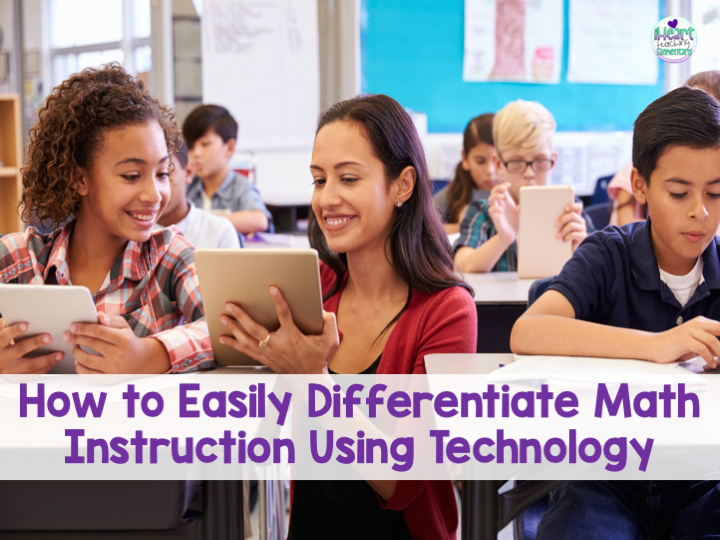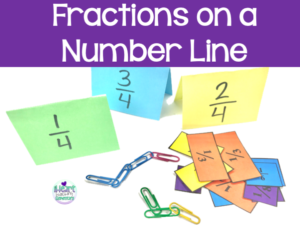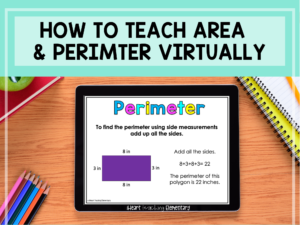“Sure let me find time to differentiate math instruction because I have lots of time to do that.” Said no teacher EVER.
What if there’s a way to differentiate math instruction using technology that’s super easy? You can even differentiate the assessments without added time!
A little side note: Technology does not have to be used in every aspect of a lesson plan.
In this post, I talk about printable and digital math games that kids love. Math can be differentiated with printable activities and games as well.
However, it makes things easier when you use technology to differentiate especially for independent practice.
What are the 3 elements of differentiated instruction?
Before we talk about how to differentiate math instruction in a lesson, let’s talk about the 3 elements of differentiation.
Content: the information students need to learn
Process: how students come to understand the content
Product: students demonstrate what they have learned
Using all 3 elements as much as you can is important. But sometimes it isn’t necessary to always differentiate the content students learn.
For example, if 3rd grade students are required to know how to find the missing factor in a multiplication problem, there is no way to change that content.
However, it is possible to change the way students practice how to find the missing factor and how they show what they learned through assessment.
Start with a Whole Group Math Lesson
Now I’m going to walk you through how to differentiate a multiplication review lesson using technology.
The review skills that can be covered in this lesson are missing factors, solving for the product in word problems, basic facts, and the relationship between repeated addition and multiplication.
First you’ll start with a whole group lesson.
Write a problem on the board or display it on the screen. Teach how to solve that problem as students watch. This is the “I do” part of the lesson.
The students can write down the work you do on their dry erase boards or desks.
Next, write or display a new problem and this time have the kids solve it with you. This is the “we do” part of the lesson. Make sure it’s the same type of problem.
For example, if you taught how to find the missing factor in a multiplication equation, work together to find the missing factor in the second example.
Finally, you’d have the kids try it on their own in the “You do” part of the lesson. Give the kids an equation where they have to find the missing factor.
You can differentiate in this portion of the whole group lesson by going to struggling students and scaffolding. Repeat the 3 parts of the whole group lesson with each of the remaining multiplication review skills.

Differentiated Independent Practice
After doing a whole group lesson it’s important to give students time to practice. You can either have them practice independently or with a math partner.
This is where you can differentiate math instruction using technology.
One way I like to differentiate math activities is by assigning digital task cards in Google Classroom.
If you have a below average, average and above average group of kids you can assign each group a different set of cards.
But this works with whatever levels of abilities you have. Make it work for you.
To differentiate in this way, make a copy of the master copy of the task cards and 3 additional copies. Label each copy with a 1, 2 or 3 at the end so that you know which set of cards belongs to which set of kids.
By the way, don’t FORGET to make that extra copy. It’s not fun to realize you’ve edited the master after assigning the task cards and need to start over.
I may or may not be speaking from experience!
Just say the master copy has 20 cards. Set 1 will be for your struggling students.
If you assign those 20 cards to your struggling students, you may soon realize they’re putting their heads in their hands with frustration. It can be overwhelming for students that are struggling to do 20 math problems in one sitting.

This is where you can differentiate math instruction.
Instead, assign them 8 digital task cards to practice. (That could be 2 for each of the multiplication review skills.)
So you’d delete all of the slides you don’t want your strugglers to complete. Then assign that set of slides by giving a copy to each of your strugglers in Google Classroom.
You’d do the same thing for your average kids but instead assign a bit more, like 12 cards. Your above average kids should be able to handle 20 cards but you don’t want them completing all of them. You’ll see why later.
All students get to practice the same skills with just the right amount of problems. And it’s super easy because all you had to do was delete some slides.

Math Partner Differentiation
Another way to differentiate math instruction is by having kids practice the skills with partners.
I assess my students at the beginning of every unit and assign them partners, according to how they performed. I keep students with similar math abilities together so they can work at the same level.
In the same way you assigned the digital task cards to individuals, you can do that with math partners.
Give your struggling math partnerships fewer problems and the more advanced partnerships more.
To work together, partners would have the same task card in front of them. Partners can have the cards displayed on their own device or a shared device.
Want to avoid having one partner do all of the work? Here’s an idea for having partners work together on digital task cards.
Partner 1 solves the problem on the task card out loud while partner 2 solves it on paper.
Let’s say the slide says to write a repeated addition problem that can be used to solve 4×6. Partner 1 tells partner 2 to write down 4+4+4+4+4+4 and partner 2 writes it down. Then partner 1 says that 4+4+4+4+4+4=12. If partner 2 agrees, he records it on the slide.
Partners switch roles for the next slide and continue this pattern until all of the task cards are completed.

Assessment Made Easy
Want to know what’s even better about this differentiated lesson plan? There’s no need to come up with a separate test!
Yes you read those sweet words correctly. You can use the same set of task cards for practice and assessment.
Remember when I said not to assign all 20 digital task cards to your advanced group? Those extra cards you didn’t assign can be used as the assessment.
You’d follow the same steps for assigning the independent practice cards. Just delete the cards you didn’t use for practice.
Super easy and now you can put those lesson plans down and enjoy the extra time.
“Sure I can easily differentiate math instruction using technology like digital task cards.” Now that’s a phrase that a teacher is more likely to say!
Would you like step-by-step instructions for assigning task cards to students on Google Classroom? Just sign up below and I’ll send you the guide.




I like this idea and it is awesome that it can be used in Google Classroom!!
Thanks Debra! So happy to hear that this was helpful to you.